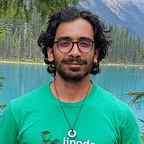Takeaways from a Product Manager Interview Workshop
all the highlights and need-to-know info from a Blueprint-led PM interview workshop
Blueprint hosted the year’s first Product Manager (PM) interview workshop that showed 20 future PMs the ins and outs of the role. We’re going to share some of the takeaways from the workshop and share how you can get involved! But first, here are our presenters:
The Three Presenters
What is a PM?
A product manager helps guide the development of a product/service and acts as a bridge between the lands of tech and business. For example, a PM at Blueprint works closely with our nonprofit client to understand their needs and update them on the progress. The PM then relays that information to the development team after summarizing and breaking down the ‘ask’ into nice digestible chunks.
“A PM is someone who has deep user empathy and thrives off of solving problems and thinking critically. They’re great at tasks that require coordination and communication between stakeholders, both internal and external.”
- Jenna
How does a PM’s day look like?
Eason Gao, one of our presenters, is a product manager at Splunk — a San Francisco based tech company. He was tasked with creating an obfuscation plan¹ for some sensitive info at Splunk. The entire process took 3 weeks and this is what a typical day looked like:
As you can see, a lot of communication and learning! The projects a PM does covers many functional departments and having a wide knowledge base is another bonus. Speaking of bonuses, what are some nice to have experiences for a PM?
Besides having relevant PM/leadership experience, spending time learning the following tools would help:
User interviewing tools: Qualtrics, Usertesting.com
Everyday workflow tools: JIRA, Confluence
Data analysis tools: Splunk, Snowflake
Preparing for the PM Interview
The distinctive factor of a PM interview is that you usually have to answer a question along the lines of:
What’s your favourite product and why?
Here, the interviewers are looking for your passion, creative ability, and ease with user-centered thinking. So pick a product that you have a unique perspective on. Extremely popular products (Spotify, Uber, etc) run the risk of being ‘basic’ while niche products (Roam Research, anyone?) require you to articulate really well what the product’s about. It would also be in your interest to have a favourite product in each of:
- mobile app (e.g. Wealthsimple Trade)
- web app ( e.g. Linkedin)
- a physical product (e.g. the Xbox Series X)
After picking and explaining your product, the why part is where your creativity shines. Does the product meet business objectives? Does it meet customer needs better than the competition? Something entirely different? It’s all up to you! Just remember to have a structure to your answer beforehand so the interviewers know you’re organized as well.
Next Steps
The presenters covered a *lot* of information in one short workshop. Shahaana Naufal, a fellow blueprint member, sums it up well:
We received a high level overview of what PM is, and in-depth interview prep improving my understanding of the way in which PMs think about the decisions they’re making.
Navigating through all of the info mazes to understand what a PM is can be overwhelming, we’d like to thank all of the mentors at Blueprint for their help in developing our member’s skills. In particular, thank you Jenna Hirji, Julian Leung, and Eason Gao for hosting an insightful event ❤
If you’re interested in speaking at UW Blueprint and sharing what you do, feel free to reach out to us at info@uwblueprint.org
Notes
[1]: An obfuscation plan is a detailed process of concealing something important: login information, user details, credit card numbers, etc.
